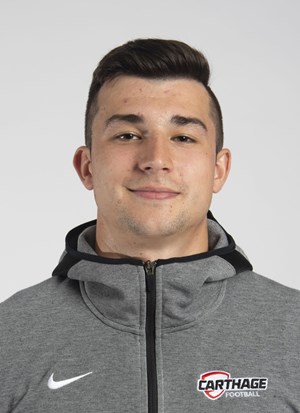Celebration of Scholars
#42: For Division III College Football Athletes, Does Having A Max Squat That is Over 200% Their Body Weight Increase the Likelihood of Knee Pain Occurring During a Competitive Season?
 Name:
Jacob Boucher
Name:
Jacob Boucher
Major: Athletic Training
Hometown: Mukwonago
Faculty Sponsor: Ashley Greenwood
Other Sponsors:
Type of research: Independent research
Abstract
For Division III college football athletes, does having a max squat over 200% body weight increase the likelihood of pain in the knee throughout a regular season? Current research is not able to provide sufficient results that support an answer. The results were from 15 studies found on PubMed. Keywords searched to find these articles included "Knee injury," "Mechanism of Injury," and "Prevention." The back squat is a joint exercise used by collegiate football teams to assess lower extremity strength in their student-athletes. Athletes may experience pain in the knee without a known mechanism of injury. One possibility for this knee pain can be the exercises within their training program. A popular movement that football coaches use to test the strength of an athlete's lower extremity is the traditional back squat. They use one rep max values to measure how strong their athletes are. Multiple studies showed that the muscles' specific forces on the knee could result in structural damage. Other studies produced results that support the benefits of particular exercises, such as lunges and deadlifts. No studies that analyzed the effect of a back squat on the knee joint in a football season were found. Certain studies used a cadaver knee to produce the results. With those studies, the results cannot be compared to athletes on a field because of the difference between a cadaver knee and a living knee. In conclusion, the review of the current literature is unable to provide a reliable answer to the problem stated.Submit date: April 1, 2022, 1:18 p.m.
